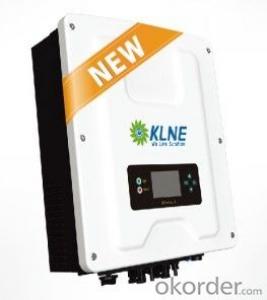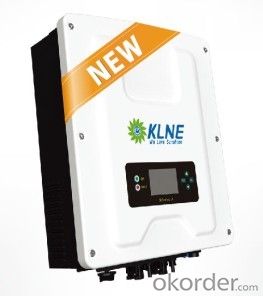Low Cost Solartec D 4000 On Grid Inverter with 2 MPPT WiFi
- Loading Port:
- Shanghai
- Payment Terms:
- TT OR LC
- Min Order Qty:
- -
- Supply Capability:
- 10000 set/month
OKorder Service Pledge
Quality Product, Order Online Tracking, Timely Delivery
OKorder Financial Service
Credit Rating, Credit Services, Credit Purchasing
You Might Also Like
Solartec D 2500,3000,3600,4000,4600,5000
2MPPT Trackers
online monitoring system by integrated WIFI
Integrated DC Switch
Comprehensive protection functions
Graphic display
High efficiency 97.5%
RS 485/RS 232/SolarLog Communication
5 Years warranty
G83,G59,VDE 4105,VDE 0126,CEI
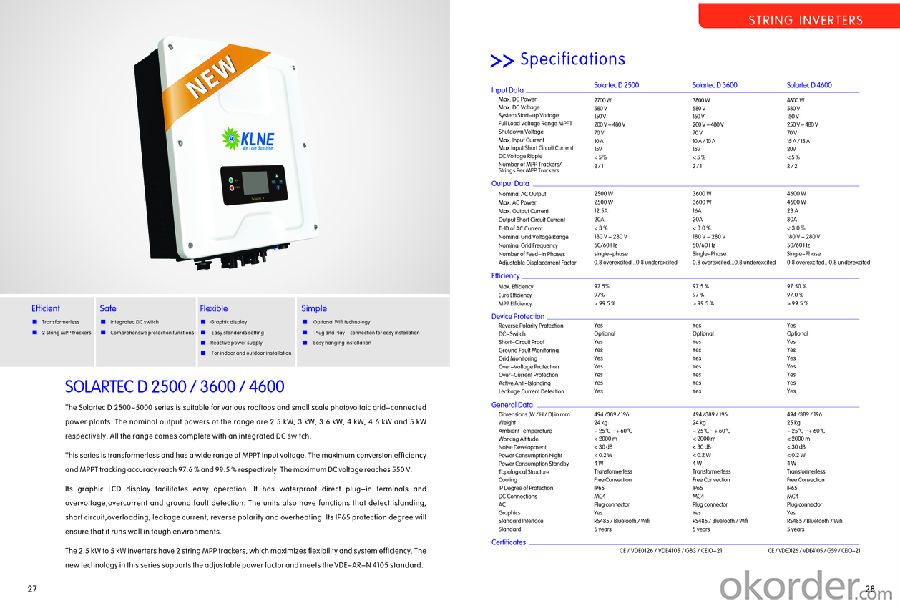
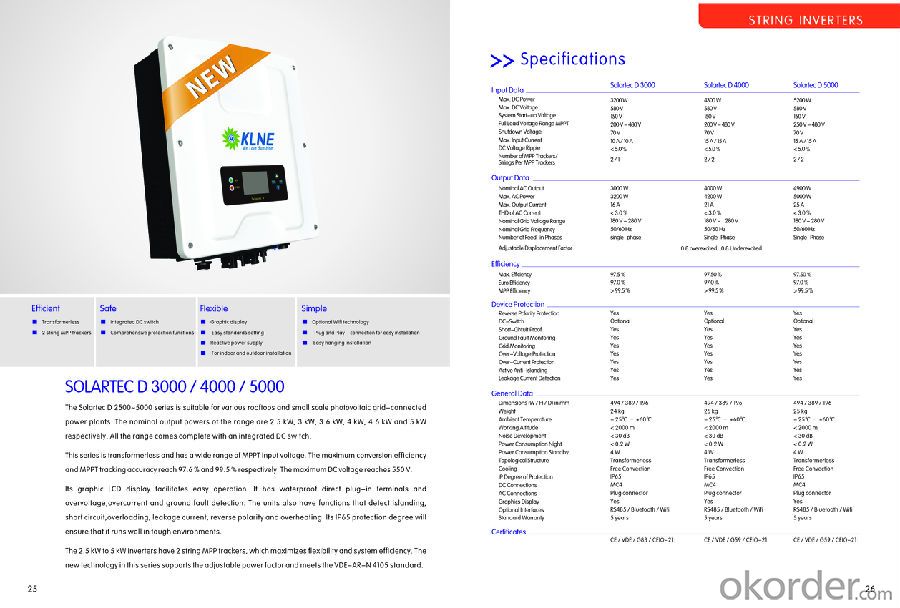
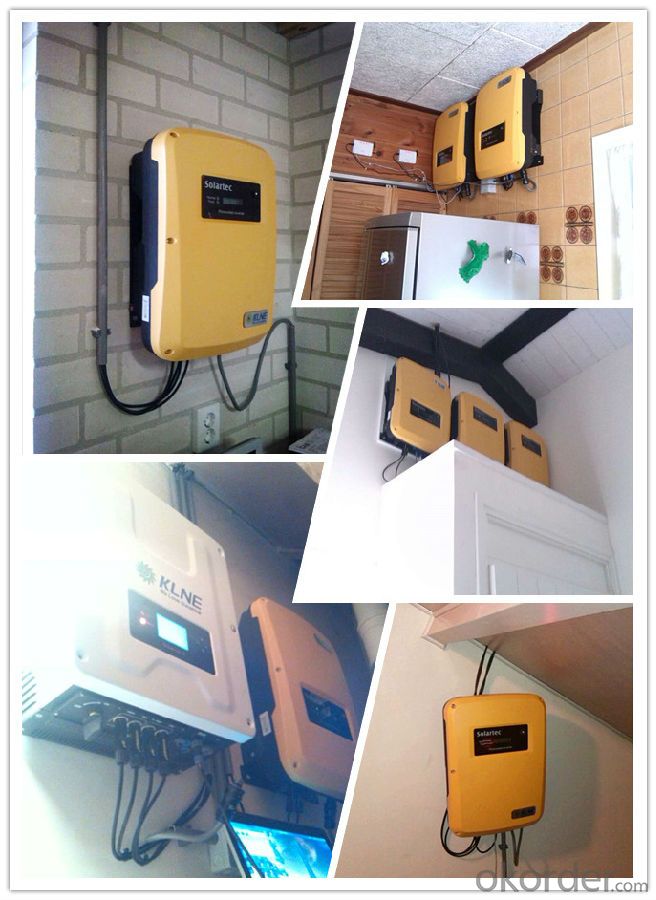
- Q: Can a solar inverter be used with a solar-powered lighting system?
- Yes, a solar inverter can be used with a solar-powered lighting system. The solar inverter is responsible for converting the direct current (DC) generated by the solar panels into alternating current (AC) that can be used to power the lighting system. It ensures efficient energy conversion and ensures compatibility between the solar panels and lighting system.
- Q: How does the power factor affect the performance of a solar inverter?
- The power factor affects the performance of a solar inverter by influencing its efficiency and capacity to convert DC power from solar panels into AC power. A low power factor can result in increased losses and reduced efficiency, leading to lower overall performance. On the other hand, a high power factor ensures efficient power conversion, minimizing losses, and optimizing the inverter's performance.
- Q: Can a solar inverter be used with different grid voltages or frequencies?
- No, a solar inverter cannot be used with different grid voltages or frequencies. Solar inverters are designed to convert the DC power generated by solar panels into AC power that matches the specific voltage and frequency of the grid it is connected to. Using a solar inverter with different grid voltages or frequencies can result in compatibility issues and potentially damage the equipment.
- Q: How does a solar inverter handle power factor correction?
- A solar inverter handles power factor correction by converting the DC power generated by solar panels into AC power that is synchronized with the utility grid. It adjusts the phase and magnitude of the AC output to match the power factor requirements of the grid, ensuring efficient power transfer and reducing reactive power.
- Q: How does a solar inverter handle low light conditions?
- A solar inverter handles low light conditions by utilizing advanced technologies such as maximum power point tracking (MPPT) and voltage boosters. These technologies enable the inverter to efficiently convert the limited amount of sunlight available during low light conditions into usable electricity. The MPPT algorithm adjusts the voltage and current to maximize the power output, while voltage boosters increase the voltage to compensate for the reduced sunlight. This ensures that the solar inverter can still generate electricity even in low light conditions.
- Q: Can a solar inverter be used in regions with high levels of electromagnetic interference?
- Yes, a solar inverter can be used in regions with high levels of electromagnetic interference. However, it is important to ensure that the solar inverter is designed and manufactured to have proper electromagnetic compatibility (EMC) measures in place. These measures help to minimize the impact of electromagnetic interference on the operation and performance of the solar inverter.
- Q: What is the role of a solar inverter in a solar-powered remote monitoring system?
- The role of a solar inverter in a solar-powered remote monitoring system is to convert the direct current (DC) electricity generated by the solar panels into alternating current (AC) electricity that can be used to power the monitoring system. It also ensures that the electricity generated matches the requirements of the monitoring equipment, regulates the voltage, and assists in efficient power transmission and distribution.
- Q: Can a solar inverter be used with a solar-powered water purification system?
- Yes, a solar inverter can be used with a solar-powered water purification system. A solar inverter is responsible for converting the direct current (DC) electricity produced by solar panels into alternating current (AC) electricity that can be used to power various appliances and systems. In the case of a solar-powered water purification system, the solar inverter can convert the DC electricity generated by the solar panels into AC electricity, which can then be used to power the water purification system's pumps, filters, and other components. This allows the system to operate efficiently and effectively using renewable solar energy.
- Q: What is the maximum DC input voltage for a solar inverter?
- The maximum DC input voltage for a solar inverter typically depends on the specific model and manufacturer. However, in general, the maximum DC input voltage for most solar inverters is around 600 to 1000 volts. It is important to consult the product's specifications or contact the manufacturer to determine the exact maximum DC input voltage for a specific solar inverter model.
- Q: Can a solar inverter be used with thin-film solar panels?
- Yes, a solar inverter can be used with thin-film solar panels. Thin-film solar panels have a different structure and composition compared to traditional crystalline silicon panels, but they still generate DC electricity that needs to be converted into AC for use in homes or businesses. A solar inverter is responsible for this conversion process, regardless of the type of solar panels used.
Send your message to us
Low Cost Solartec D 4000 On Grid Inverter with 2 MPPT WiFi
- Loading Port:
- Shanghai
- Payment Terms:
- TT OR LC
- Min Order Qty:
- -
- Supply Capability:
- 10000 set/month
OKorder Service Pledge
Quality Product, Order Online Tracking, Timely Delivery
OKorder Financial Service
Credit Rating, Credit Services, Credit Purchasing
Similar products
Hot products
Hot Searches
Related keywords
